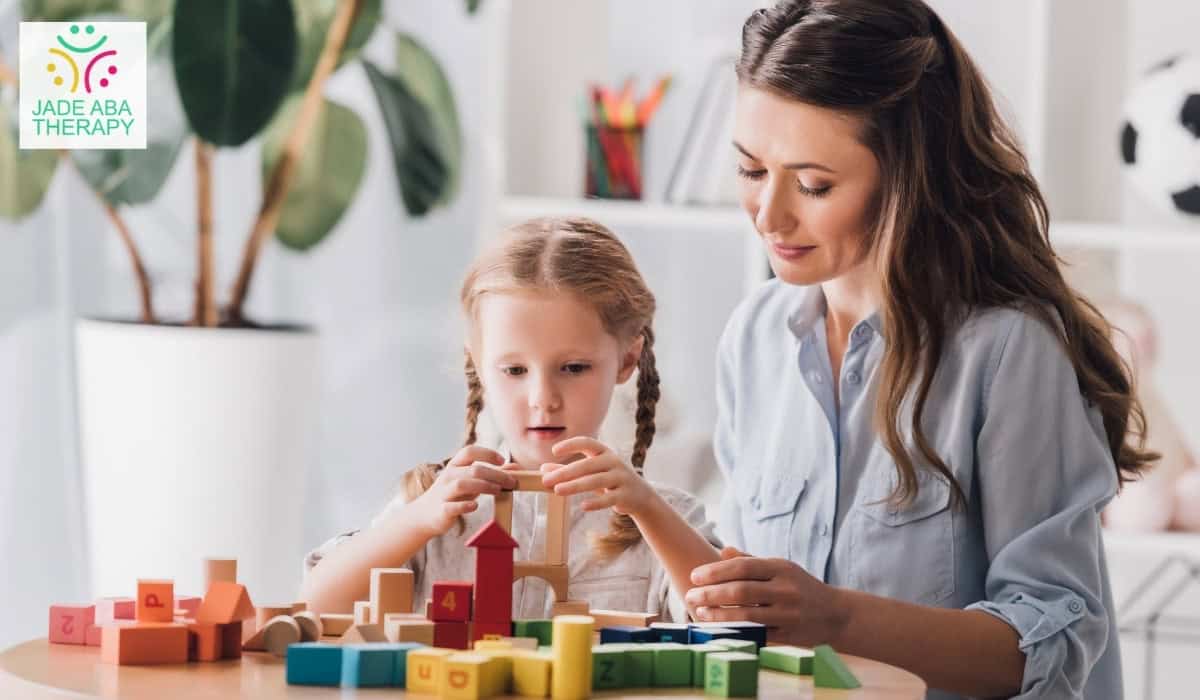Key Points:
- Social Communication Disorder (SCD) and Autism Spectrum Disorder (ASD) share overlapping features but differ in scope and criteria.
- Understanding these differences helps parents identify appropriate interventions and therapies.
- Early intervention, including ABA therapy, can support children in building stronger communication and social skills.
When parents notice delays in their child’s social or communication skills, it can be overwhelming. The terms Social Communication Disorder (SCD) and Autism Spectrum Disorder (ASD) often come up in evaluations, leaving families wondering how to tell them apart. While the two share similarities, they are not the same diagnosis. Understanding where they overlap—and where they differ—is crucial for making decisions about support, school accommodations, and therapies like Applied Behavior Analysis (ABA).
This article breaks down SCD and autism in detail so parents can feel more informed and prepared.
What is Social Communication Disorder?
Social Communication Disorder is a developmental condition that affects how a child uses language in social settings. Unlike speech delays, SCD isn’t about pronouncing words—it’s about knowing how and when to use language to connect with others.
Children with SCD often speak clearly and have an age-appropriate vocabulary, but they may struggle in conversations or social interactions. This condition is formally recognized in the DSM-5, but it’s still less well known than autism, which sometimes leads to confusion for families.
Core Difficulties in SCD
- Challenges with social use of language: Trouble with greetings, taking turns in conversation, or adjusting language depending on who they’re speaking with.
- Difficulty following conversational rules: Interrupting, not knowing when to stop talking, or missing cues like tone and body language.
- Problems understanding context: Struggling with idioms, humor, sarcasm, or non-literal language.
- Breakdowns in storytelling or explaining: Finding it hard to organize thoughts in a way others can follow.
These issues can impact friendships, classroom participation, and self-esteem.
What is Autism Spectrum Disorder?
Autism Spectrum Disorder (ASD) is a neurodevelopmental condition that affects communication, social interaction, and behavior. Unlike SCD, autism includes a wider range of features, including repetitive behaviors and restricted interests.
Parents often notice early signs in toddlerhood, such as limited eye contact, delayed speech, or repetitive movements. While autism varies in presentation—hence “spectrum”—the diagnostic criteria always involve both communication challenges and behavioral patterns.
Main Characteristics of ASD
- Communication and social differences: Delayed speech, unusual tone of voice, or difficulty reading social cues.
- Restricted or repetitive behaviors: Hand-flapping, lining up toys, or strong insistence on routines.
- Focused interests: Intense focus on specific topics or activities, sometimes beyond what is typical for age.
- Sensory differences: Heightened or reduced sensitivity to sounds, textures, lights, or smells.
Autism affects how a child experiences the world, which makes early, individualized intervention vital.

The Overlap Between SCD and Autism
Because both SCD and autism involve communication difficulties, the two are sometimes mistaken for one another. However, the overlap lies mainly in language and social interaction, not in the broader behavioral patterns.
Children with either diagnosis may struggle to make friends or follow the flow of a conversation. Both may need help with perspective-taking, such as understanding that others have different thoughts or feelings.
Where they differ is in the presence of repetitive behaviors and restricted interests—core features of autism but not of SCD. This distinction is what evaluators look for during assessments.
5 Key Differences: Social Communication Disorder vs Autism
To break down the distinctions between Social Communication Disorder and Autism more effectively, it’s helpful to compare how each condition presents in everyday life. Looking at the core features side by side makes it easier to see where they overlap and where they diverge.
- Behavioral Symptoms: Children with autism typically display repetitive movements, fixated interests, or sensory sensitivities. These are not part of an SCD diagnosis.
- Social and Emotional Reciprocity: While both groups struggle with communication, children with SCD may engage socially but in awkward or mismatched ways. Children with autism often face deeper challenges in reciprocity, such as difficulty forming relationships.
- Onset and Developmental Path: Autism signs usually appear before age three, though some children are diagnosed later. SCD signs often become more noticeable once children enter school and conversational demands increase.
- Diagnosis and Assessment: Autism is diagnosed based on both social communication deficits and restricted, repetitive behaviors. SCD is diagnosed when only the communication aspects are present without repetitive behaviors.
- Impact on Daily Life: Both conditions affect school performance and social integration, but autism tends to have a broader impact on daily routines, emotional regulation, and sensory experiences.

How Professionals Diagnose SCD and Autism
Before a clear diagnosis can be made, professionals take a careful and multi-step approach. Understanding how the process works can ease anxiety for parents and give them confidence in the evaluation.
Here are the key components that typically guide the assessment for Social Communication Disorder or autism:
- Developmental history review: Gathering information about milestones, social interactions, and early behaviors.
- Direct observation: Watching the child interact, play, and communicate in structured and unstructured settings.
- Standardized testing: Using language and behavior assessments to evaluate strengths and weaknesses.
- Team input: Pediatricians, psychologists, speech-language pathologists, and behavior analysts may all be involved.
Since autism and SCD share features, evaluations aim to rule out one while confirming the other. For example, if a child shows repetitive behaviors alongside communication struggles, autism is more likely.
Why Getting the Right Diagnosis Matters
A clear diagnosis ensures that children get tailored interventions instead of generic support. Mislabeling a child can lead to frustration when therapies don’t match their needs.
For example, a child with SCD may benefit more from targeted speech-language therapy focusing on conversational rules, while a child with autism may need a broader plan that includes behavior therapy, sensory integration, and social skills groups.
Both conditions require support, but the pathways differ. That’s why parents should seek comprehensive evaluations from experienced clinicians.

How ABA Therapy Supports Children with Autism
When a child is diagnosed with autism, ABA therapy often becomes part of their support plan. Applied Behavior Analysis focuses on teaching practical skills in a structured way, using reinforcement to encourage progress.
ABA therapy is particularly effective for children with autism because it doesn’t just target communication—it also addresses behavior, social skills, daily living skills, and emotional regulation.
The following are some of the benefits of ABA Therapy:
- Building communication skills: Verbal language, sign language, or alternative systems like PECS or AAC.
- Reducing challenging behaviors: Replacing tantrums, aggression, or self-injury with healthier alternatives.
- Increasing independence: Teaching skills like dressing, brushing teeth, or following a daily routine.
- Enhancing social skills: Encouraging peer play, turn-taking, and group participation.
- Supporting families: Parent training ensures progress extends beyond therapy sessions.
Providers work with families to ensure that every plan is tailored to the child’s individual strengths and needs.
Final Thoughts: Supporting Your Child’s Journey
Both Social Communication Disorder and Autism Spectrum Disorder affect the way children connect with others, but the two are not the same. Autism often includes repetitive behaviors and sensory differences, while SCD centers more on the social use of language.
For families navigating autism, early and consistent support makes a lasting difference. ABA therapy provides proven strategies to strengthen communication, encourage independence, and help children thrive in everyday life.
At Jade ABA Therapy, we’re committed to compassionate, evidence-based care tailored to each child’s needs. Families can access ABA therapy in Maryland and Virginia, giving children the confidence and skills to grow. Contact us today to get started.




